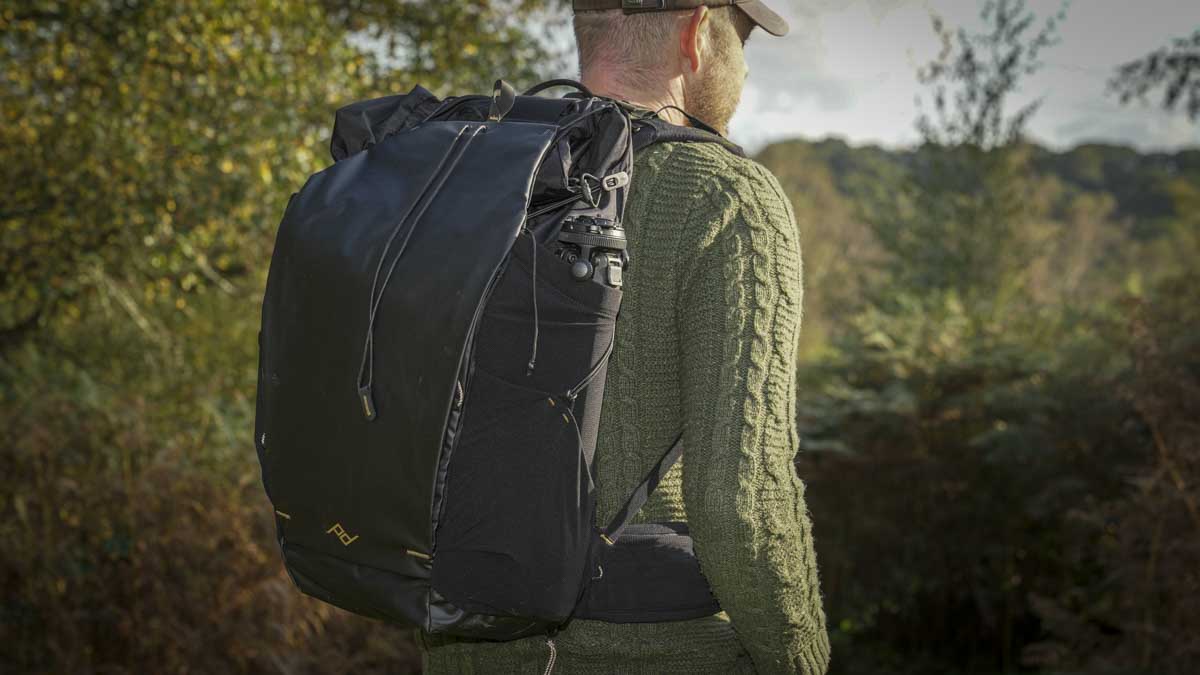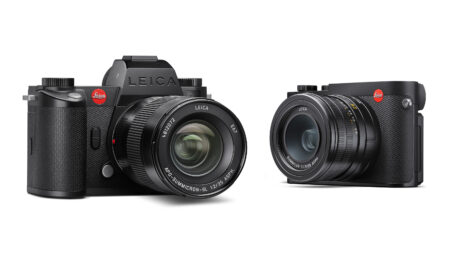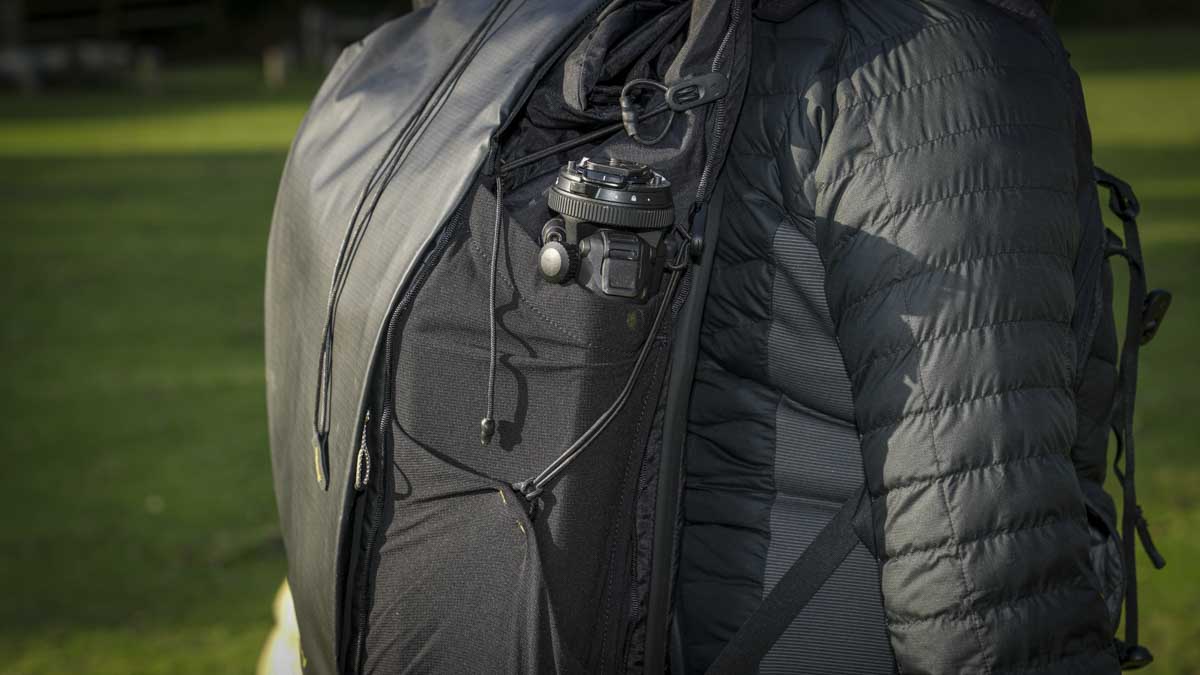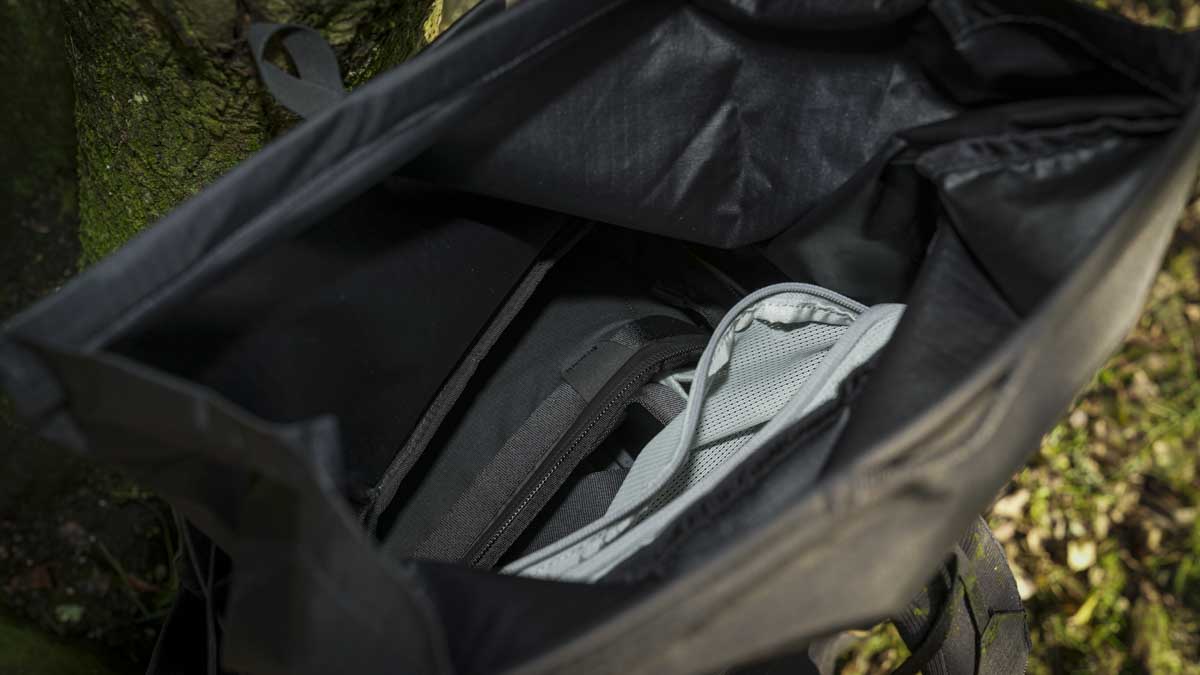When it comes to performance, the Peak Design Outdoor Backpack 45L excels in protection and comfort but takes a while to fully figure out, with some innovative features that, while good, can get fiddly when out in the field. Starting with the weatherproof exterior, this is extremely high quality and stood up to all the unexpected rain showers and drizzle that you can expect in the UK. While the exterior of the bag does get wet, the water rolls off, keeping the kit inside well protected.
In rain, the roll-top design is partly protected by the front expansion, and for the most part, rain rolls off. When opening the top of the bag after a downpour, it’s worth giving it a good shake before opening, but essentially the design of the bag is such that water generally cannot access the interior when it’s opened.
Opening the bag, I opted for a small and medium cube, which was more than enough to carry a Sony A7 IV, three lenses, some filters, and other kit. The fit of the cubes is a simple push-fit, and when it comes to securing them into the bag with the provided clips it alls seems a little like an after thought—there are loops and connectors, but it’s not quite as sung as I would have liked. As the bag settles, the shape tends to become a little more permanent, but there’s always a slight sense that the cubes are just a temporary arrangement.
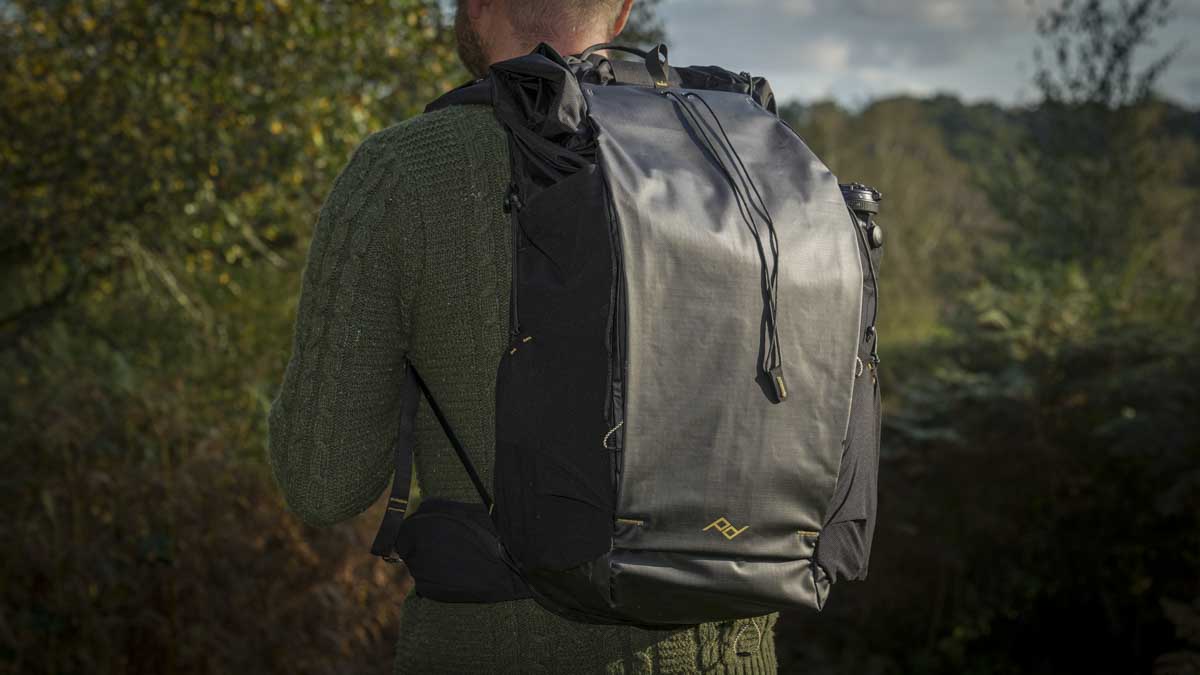
The nice thing about the cubes is that they can be removed and used separately, with their own zip lids. This means that if you have different kits for different situations, you can quickly make the change without needing to unpack and repack. Likewise, if you just want to carry light with one camera, a single cube can be used, leaving plenty of space for personal effects. I have both Sony, Nikon and Canon systems depending on what job I’m doing, so to be able to pull a complete kit from the shelf and push it into the bag is a great feature. If it clipped securely then that would be even better!
The Peak Design Outdoor Backpack 45L balances this modular approach well, although there is room for improvement and as I mentioned I would have liked to see some innovative clasp or lock system for attaching the cubes. Another point is that anything small you put in the top section through the roll-top will fall through to the cubes, as there’s no barrier between the top and bottom—another feature that would have made a difference in my use of the bag. Finally, on the design, the cubes, once in place, are positioned with their zip lids folded back and under, meaning the kit rests against the rear panel of the bag. While this is normal for backpacks of this type, the 16-inch laptop sleeve only has a thin sheet of fabric separating the laptop from the kit, so throughout this test, my MacBook Pro was always placed in the sleeve with a protective case.
As a camera backpack, the lack of fast camera access might seem like a negative point. However, this is Peak Design, so the bag is fully equipped with handy camera attachment points for the Peak Design capture clip system, with a couple of mounts on the shoulder straps and further mounts on the waist strap. Since these are factored into the design, they really circumvent the usual need for quick bag access, which is a great feature.
Likewise, across the bag, there are mesh pockets that are perfectly suited for holding sunglasses, phones, and other items. While these don’t have zips for security, the elasticated tops keep things securely inside, and during the test, these became standout features for real-world use, holding items that would usually get stuck in trouser pockets.
There are real points of innovation across the bag, such as the back panel secured with the ultra-cinch hoop. This enables fast access to the top of the bag, but more importantly, it allows you to strap in wet jackets and other gear that you need fast access to. The pouch section is also really handy, and during the test, a 70-200mm lens fitted neatly into the pouch, making it a great way to hold lenses securely without needing to open the bag.
As mentioned, there were some initial issues with the volume of clips, hooks, and straps, but after a short time, these can be packed away, so they don’t flap around. Essentially, the bag arrives with everything, and you can then trim it down to fit your needs. A good example of this is the waist strap: on a hike, when the going gets tough, you can use them as usual, but when you no longer need them, they can be rotated up and slipped under the back panel. If you decide you don’t want them at all, they can be unclipped. Likewise, the dual sternum straps are just looped in place, which, while secure, also means these too can be removed. Peak Design has essentially given you all the optional extras—it’s just up to you how you use them or not. If you don’t like the straps, just remove them!
While the bag isn’t ultra-lightweight, it is light considering what it is and what it has been designed to do. The inner frame offers superb support and structure, and unlike some ultra-light bags, it holds its form well, even before the camera cubes are added. With the cubes added, the total real weight comes in at 2.7kg, while without the cubes, it comes in at 1.92kg, although the quoted weight is 1.55kg.
Overall, for versatility, this is a superb bag with plenty of flexibility in its design and use that will please any photographer looking for a robust and stylish way to protect their kit as we head into winter.


